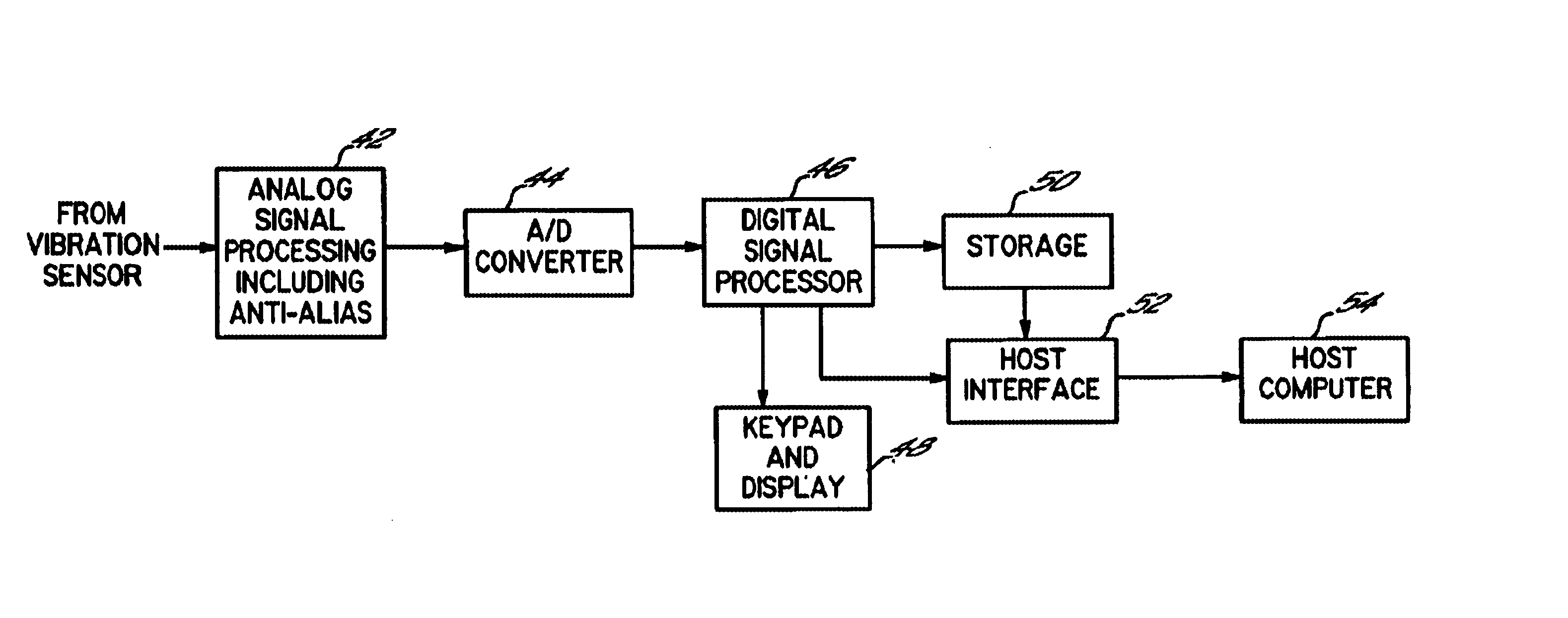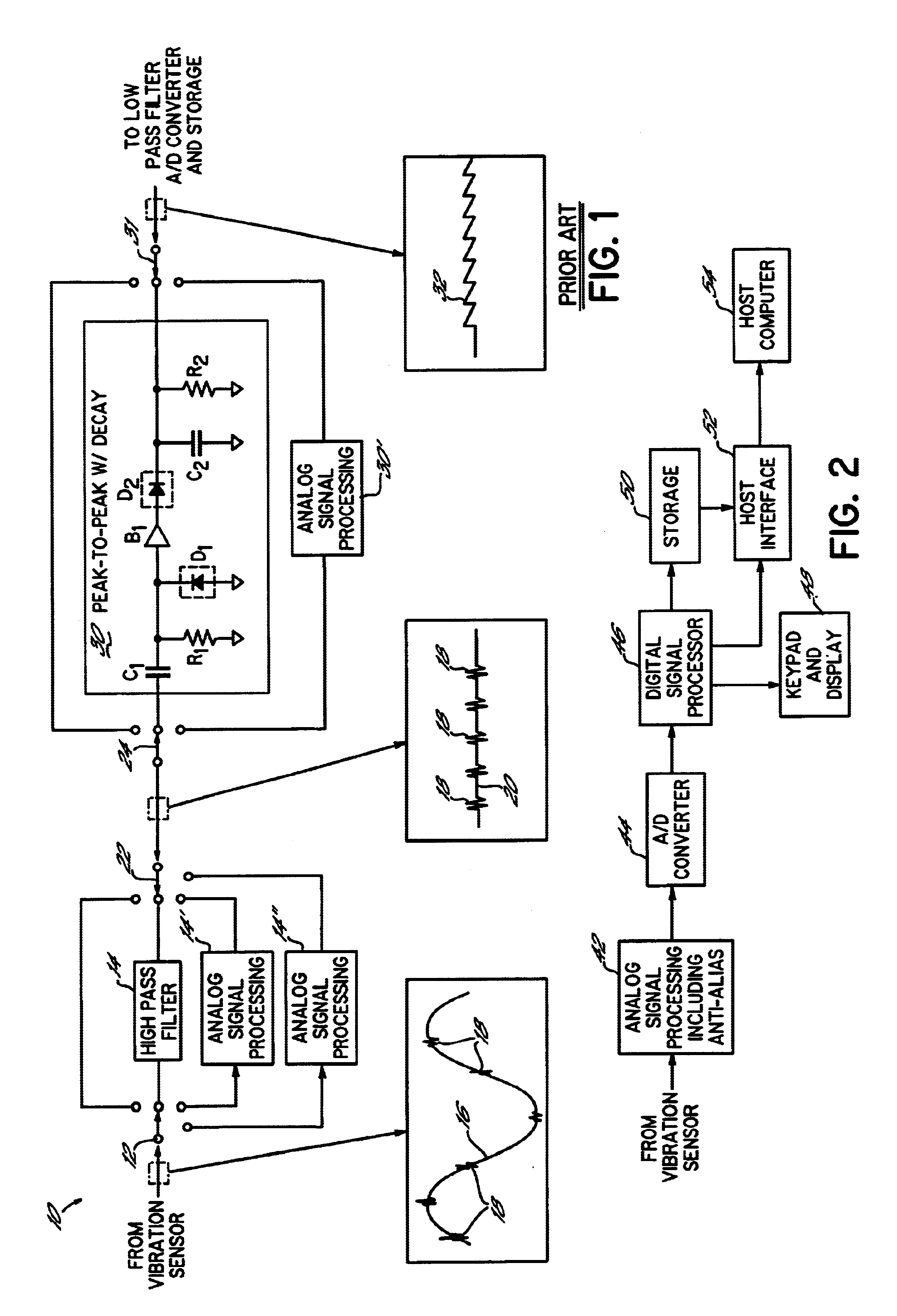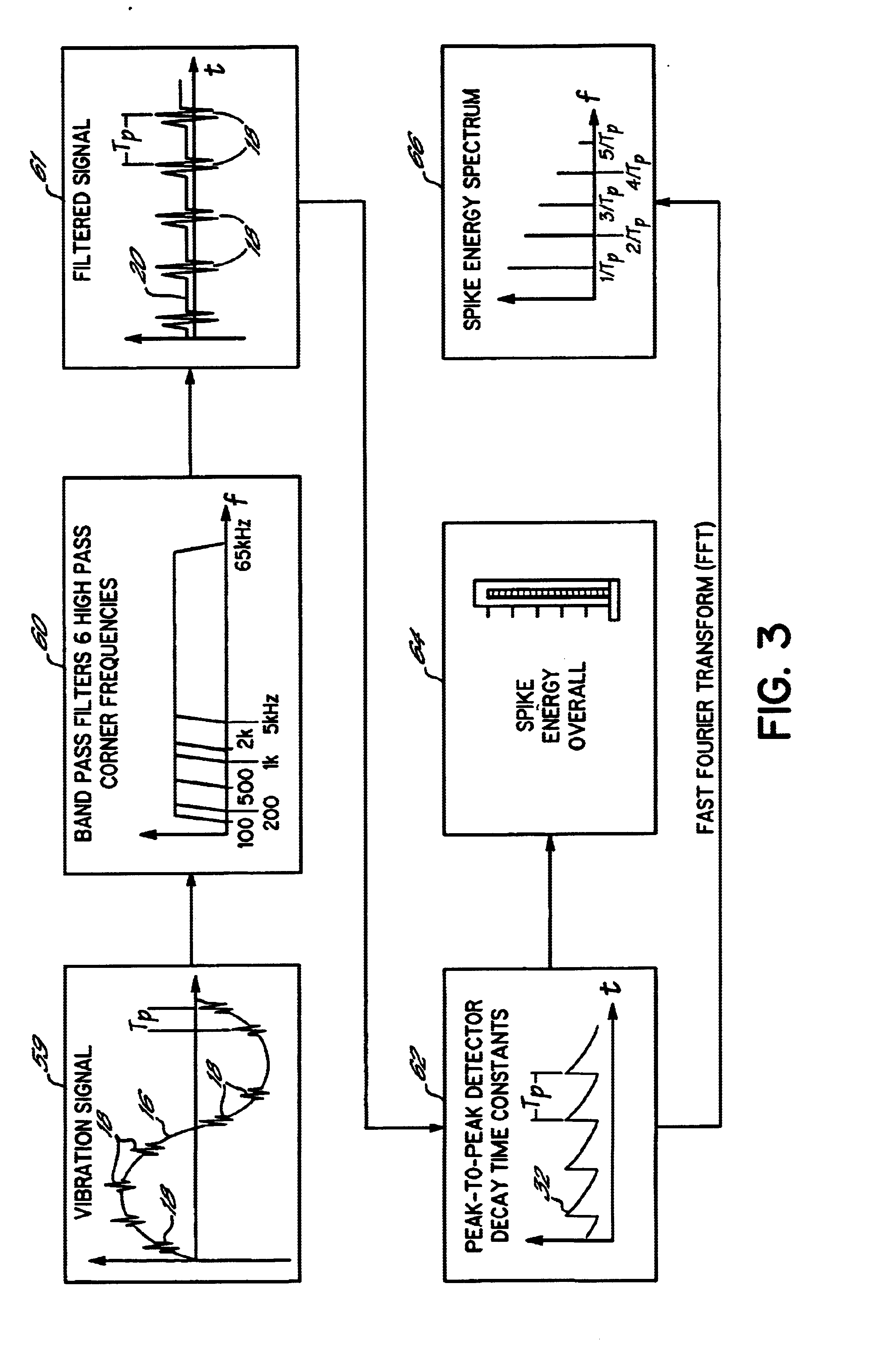Adaptive high frequency energy detection
a high frequency energy and detection technology, applied in the field of vibration data collection and analysis, can solve the problems of increasing higher frequency vibration, causing “clicking” to occur, and generating different frequency patterns of parts, and achieve the effect of easy analogization and readily changing
- Summary
- Abstract
- Description
- Claims
- Application Information
AI Technical Summary
Benefits of technology
Problems solved by technology
Method used
Image
Examples
Embodiment Construction
Referring now to FIG. 2, a data collector 40 in accordance with principles of the present invention can be described. Functional blocks of the data collector are illustrated in FIG. 2 to facilitate the description of the operations contemplated by the present invention. It will be appreciated, however, that a data collector suitable for carrying out the principles of the present invention may take many forms. In one embodiment, a suitable data collector comprises a data collector available from the assignee of the present invention under the model name dataPAC 1500. Another suitable data collector is disclosed in U.S. Pat. No. 5,633,811 issued to Canada et al., and assigned to Computational Systems Incorporated, which describes a data collector sold by Computational Systems Incorporated, the disclosure of which is incorporated herein by reference. Alternatively, another suitable data collector is a palmtop computer having a sound interface card therein for receiving digital vibratio...
PUM
 Login to View More
Login to View More Abstract
Description
Claims
Application Information
 Login to View More
Login to View More - R&D
- Intellectual Property
- Life Sciences
- Materials
- Tech Scout
- Unparalleled Data Quality
- Higher Quality Content
- 60% Fewer Hallucinations
Browse by: Latest US Patents, China's latest patents, Technical Efficacy Thesaurus, Application Domain, Technology Topic, Popular Technical Reports.
© 2025 PatSnap. All rights reserved.Legal|Privacy policy|Modern Slavery Act Transparency Statement|Sitemap|About US| Contact US: help@patsnap.com



